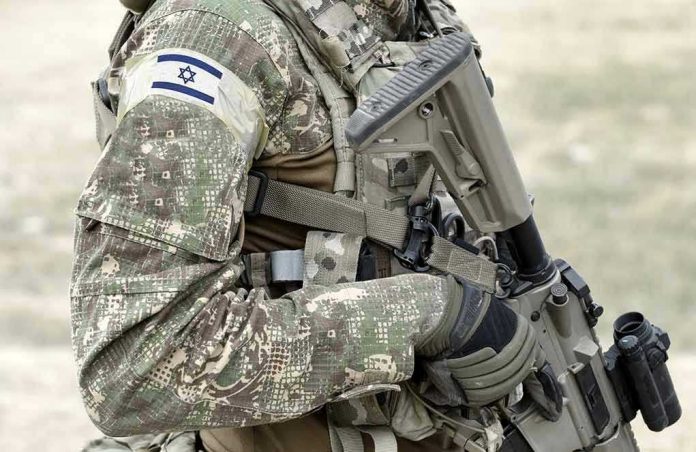
Ceasefires promise peace but, in Gaza, even the hush of noon can be shattered by the crack of gunfire—a grim reminder that hope can be as fragile as the ink on a truce agreement.
Story Snapshot
- Ceasefire between Israel and Hamas took effect on October 10, 2025, but was reportedly violated within hours by Israeli troops firing on Palestinian civil defense workers.
- The incident led to at least one death and several injuries among non-combatants, deepening mistrust and threatening the truce’s stability.
- Mass returns of displaced Palestinians to devastated northern Gaza began as the Israeli military withdrew from some areas.
- The humanitarian crisis remains acute, with both immediate relief and long-term reconstruction uncertain amid ongoing political tensions.
Ceasefire Declared—And Almost Immediately Breached
Gaza’s streets braced for a silence they had not heard in years. The ceasefire, painstakingly brokered by U.S. diplomats and approved by Israel’s cabinet, was meant to halt a conflict that had killed tens of thousands and displaced nearly all of Gaza’s population. Yet, within hours, as civil defense workers moved through the battered neighborhood of Sheikh Radwan, Israeli troops reportedly opened fire, killing one and injuring several. This was not a firefight between combatants, but a fatal encounter targeting those whose job is to save lives, not take them. The breach was more than a tragic footnote; it was a signal that even the most anticipated pauses in violence can collapse under the weight of suspicion and unresolved grievances.
The ceasefire violation reverberated instantly. For Palestinians hoping to return to their homes, the shooting was a chilling warning: the path back would be neither safe nor simple. For Israeli officials, the incident was either an aberration or, as some claimed, a necessary response to perceived threats—a justification that rings hollow for humanitarian workers and international observers. If the ink on a ceasefire is still drying, but the guns are already firing, what chance does peace truly have?
War’s Relentless Toll: Displacement, Destruction, and Despair
The conflict’s origins stretch back decades, but the latest escalation—sparked in October 2023 when Hamas launched a massive attack on Israel—left Gaza in ruins. The Israeli response was swift and overwhelming, with more than 67,000 Palestinians killed and the enclave’s infrastructure reduced to rubble. By the time the ceasefire was announced, 90% of Gaza’s 2 million residents had been displaced, many multiple times, and whole neighborhoods had vanished from the map. When the ceasefire began, tens of thousands of Gazans streamed northward, returning to homes that, for most, no longer existed. The civil defense workers caught in the reported shooting were among the few trying to make that return even remotely survivable.
Humanitarian agencies scrambled to deliver aid, but the risks of renewed violence—and the example set by the incident in Sheikh Radwan—complicated every effort. The Israeli military began withdrawing from key areas in accordance with the agreement, yet the sense of danger never left. Aid workers and civilians alike navigated a landscape scarred by years of siege and sudden, unpredictable violence. In these circumstances, even a single breach can have outsized consequences, eroding trust and stoking fears that the ceasefire is merely a pause before the next storm.
Ceasefires in Gaza: History’s Harsh Lessons
Ceasefires in the Israel-Gaza conflict have a track record best described as brittle. In both 2014 and 2021, truces collapsed within days—sometimes hours—due to violations by one or both sides. The latest agreement, hailed as a diplomatic breakthrough, was supposed to be different, with explicit terms for prisoner exchanges, troop withdrawals, and humanitarian access. Yet the reported targeting of civil defense personnel so soon after the ceasefire’s start is reminiscent of past failures. Each incident, whether isolated or systematic, chips away at the already threadbare fabric of trust needed to sustain any truce. The power dynamics remain stark: Israel controls the borders and wields overwhelming military force; Hamas, battered but unbowed, seeks to retain a grip on Gaza; and civilians remain the perpetual collateral, their safety contingent on decisions made far from the ruins they inhabit.
International reactions followed a familiar script. The United States, as the ceasefire’s chief broker, called for restraint, while humanitarian groups pleaded for safe passage and basic relief. Meanwhile, the families of Israeli hostages and Palestinian prisoners waited anxiously for the exchanges promised as part of the deal. The broader political questions—who will govern Gaza, how will security be maintained, can reconstruction even begin—remained frustratingly unanswered.
The Road Ahead: Fragile Peace and Unending Uncertainty
Short-term, the ceasefire has curbed large-scale violence, enabling the first tentative returns and aid deliveries. However, the reported breach in northern Gaza has deepened fears that peace will remain elusive. For Gaza’s civilians, each day is a gamble between hope and heartbreak—will the truce hold, or will the next bullet shatter another day’s promise? For Israel and Hamas, the incentives to maintain calm compete with deep-seated mistrust and irreconcilable goals. The humanitarian crisis, meanwhile, looms as a test for the entire international community. With infrastructure destroyed and political solutions distant, the prospects for lasting peace are as uncertain as the truce itself. In the end, Gaza’s fate may depend less on what is agreed in distant capitals and more on what happens in the ambiguous, perilous hours after a ceasefire is declared.













